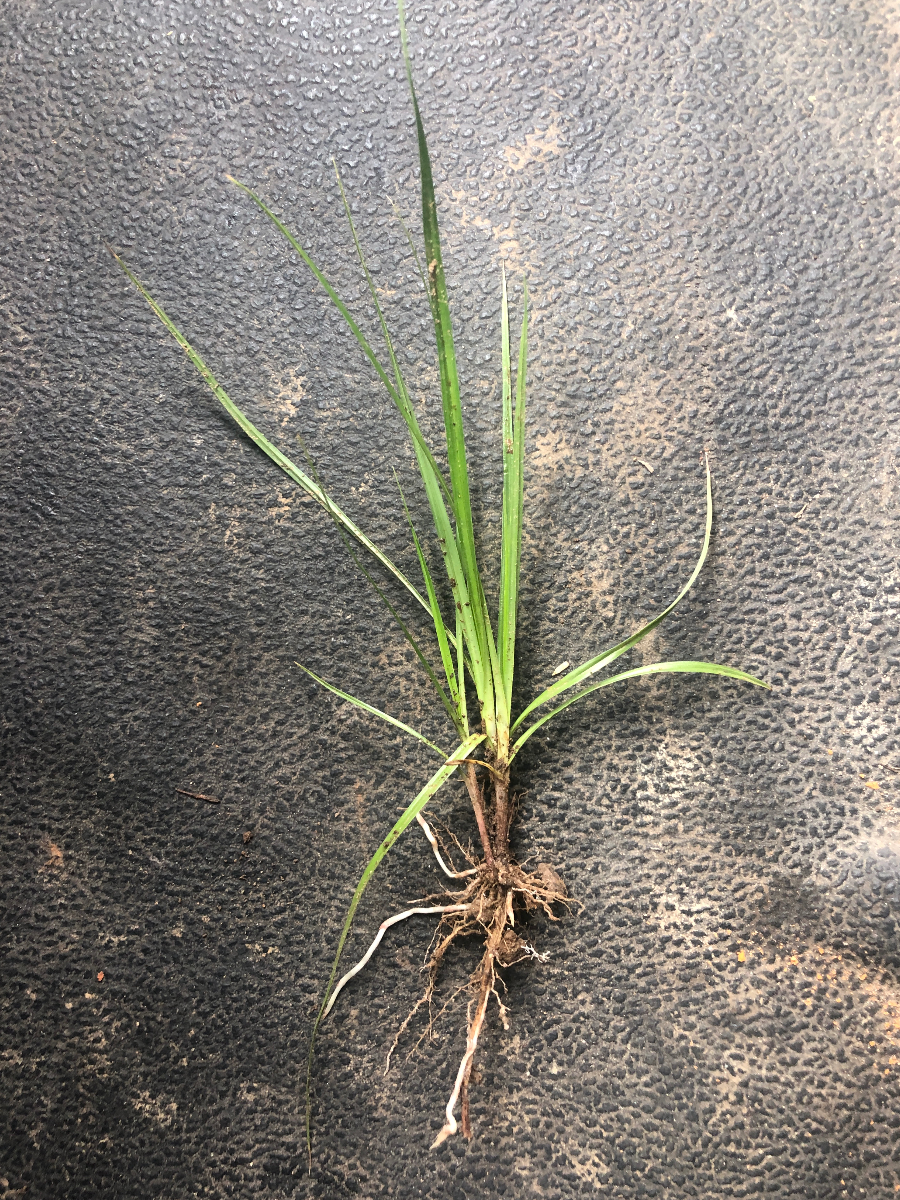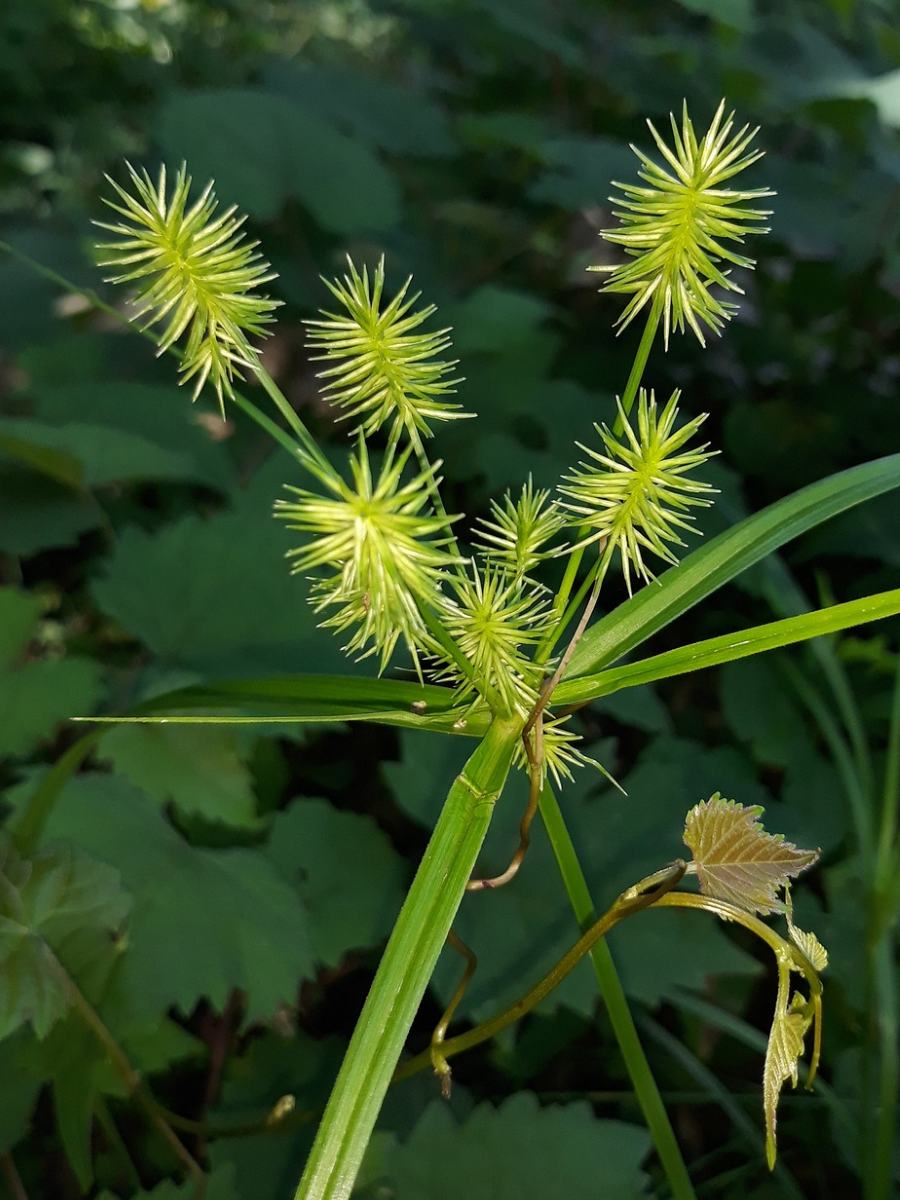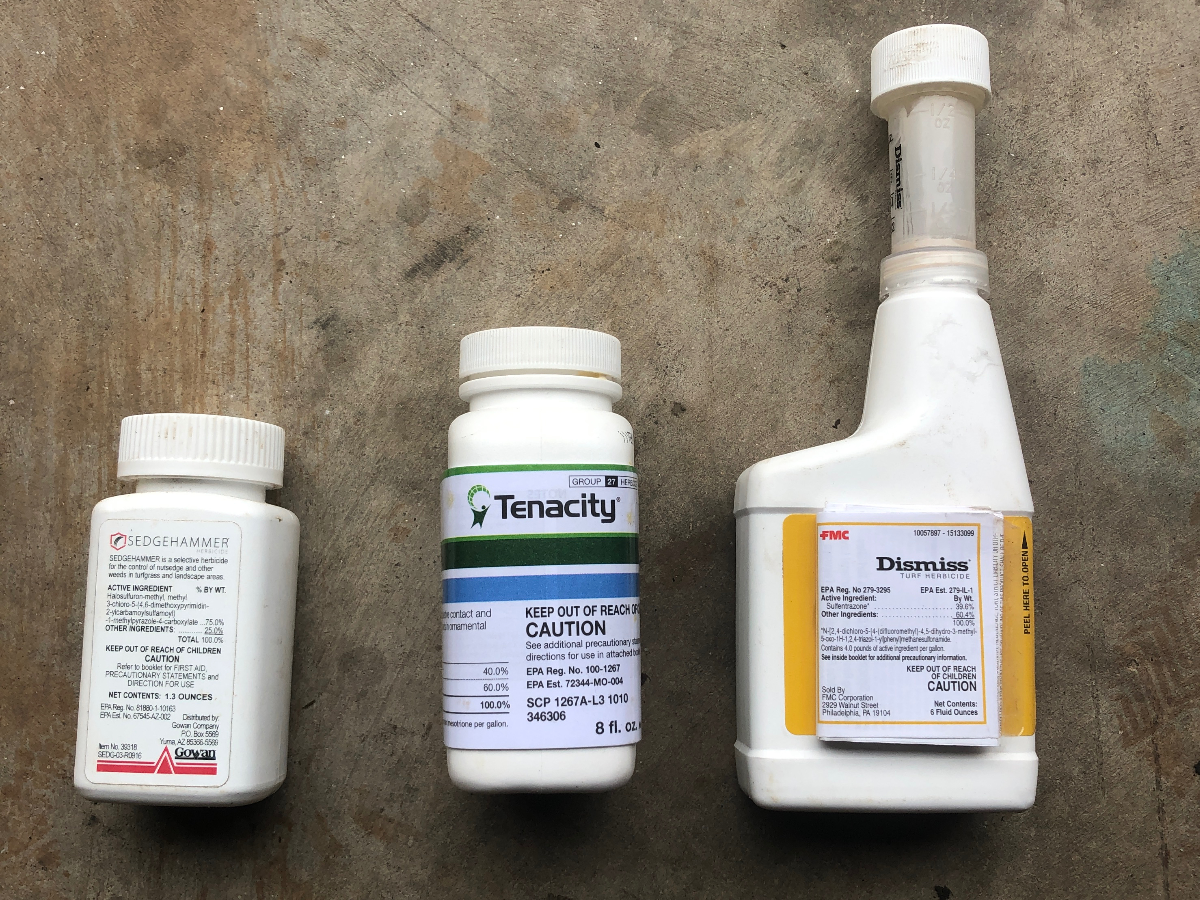Stated earlier, chemical herbicides work best for this weed. Look for a systemic herbicide when selecting a control method. Systemic herbicides infect the entire plant and kill it completely. This trait is very important to ensure that nutlets are killed.
Pre-emergent herbicides do little to prevent yellow nutsedge because it is a perennial weed. Yes, pre-emergents will prevent new yellow nutsedge seeds from germinating, but it will not prevent dormant plants and nutlets from sprouting.
Glyphosate, the active ingredient in Round-Up, effectively kills yellow nutsedge. However, glyphosate is a broad spectrum herbicide and often causes collateral damage to nearby plants if the application is not performed carefully. For this reason, glyphosate works well in flowerbeds and gardens, but is not suitable for use in lawns.
There are several products that will selectively kill yellow nutsedge in lawns. Some that we use include: Sedgehammer, Tenacity, and Dismiss. Each herbicide works differently. Always read and follow the label for application. Below is a photo of the three herbicides mentioned.







